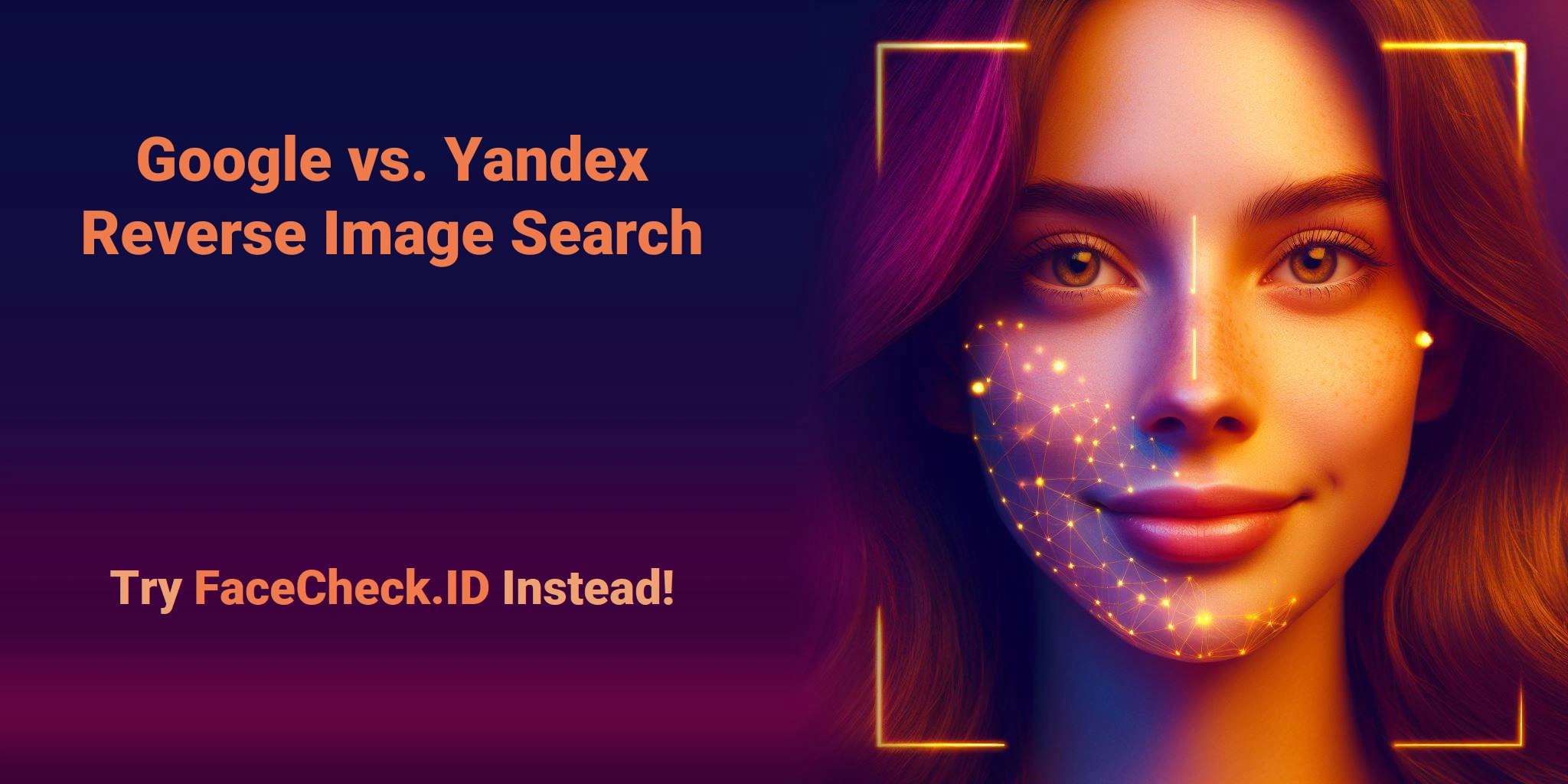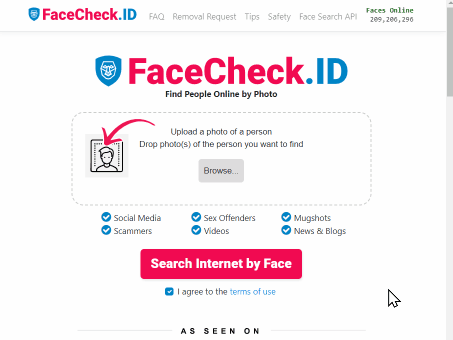Google's Image Search vs. Yandex's Image Search: A Detailed Look
When you use Google's reverse image search, you can find where a photo appears online or see pictures that look similar. Yandex, a popular search engine in Russia, also has a reverse image search, but it works differently. Yandex focuses on finding the same faces in different photos.
In this article, we're going to discuss
- The Impact of Facial Recognition on Search Engines
- Understanding Facial Recognition Technology
- Digital Photography's Role in Automated Facial Recognition
- Social Media's Influence on Facial Recognition Development
- Training Facial Recognition Systems with Online Photos
- The Complex Measurements in Facial Recognition
- How Facial Recognition Algorithms Identify Faces
- Facial Recognition Software: Use and Databases
- Governments and Facial Recognition Databases
- Facial Recognition in Retail and Sports
- The Challenge of Privacy in Public Spaces with Facial Recognition
- The Debate Over Facial Recognition and Privacy
- Social Media and The Right to Privacy
- The Importance of Obscurity in Authentic Living
- The Unintended Consequences of Our Shared Photos
- Discover Facial Recognition with FaceCheck.ID
- The Reality of Facial Recognition: What We Lose
- Try Facial Recognition with FaceCheck.ID
- What facial recognition steals from us
The Impact of Facial Recognition on Search Engines
Google and Yandex differ in one key aspect: facial recognition. With Google, you can search for faces by entering names. Yandex flips this - you can search for names by uploading faces. This is a big shift and can affect how we interact with people in real life.
Understanding Facial Recognition Technology
Facial recognition technology in computers works like our own ability to recognize faces. It sees a face, analyzes its features, and identifies the person. This technology has evolved significantly over recent years.
Digital Photography's Role in Automated Facial Recognition
Imagine having multiple eyes everywhere and sharing memories with others. That's what digital facial recognition is like. It uses digital cameras to convert light into data. This technology started to grow in the early 2000s, alongside social media.
Social Media's Influence on Facial Recognition Development
With the rise of social media platforms like Facebook and YouTube, and the ability to take endless photos, our images found a new home online. This coincided with the rise of digital imagery, which was then used extensively in facial recognition research.
Training Facial Recognition Systems with Online Photos
Millions of online photos - like the ones we tag on Facebook or find on Google - help develop facial recognition technology. This technology uses algorithms to analyze and identify faces in images.
The Complex Measurements in Facial Recognition
Facial recognition involves measuring features like the distance between eyes or the length of the nose. However, the exact measurements are determined by algorithms analyzing pixel data, making it a complex process.
How Facial Recognition Algorithms Identify Faces
These algorithms learn to differentiate between faces by analyzing millions of photos. They work by minimizing differences between photos of the same person and maximizing differences when the faces are different.
Facial Recognition Software: Use and Databases
Facial recognition software is now widely available. To identify someone, they need to be in the software's database. For instance, iPhone's Face ID uses a database of just one face - yours.
Governments and Facial Recognition Databases
While companies have their databases, governments often have the largest collections of faces and names. This expands their power significantly. Many US cities are now pushing back against government use of facial recognition technology.
Facial Recognition in Retail and Sports
Retail stores, banks, and sports venues use facial recognition to monitor people of interest, like shoplifters or VIPs. Social media profiles also provide a source of identifiable photos.
The Challenge of Privacy in Public Spaces with Facial Recognition
Facial recognition technology questions our ability to remain anonymous in public spaces. Evan Selinger, a philosophy professor, argues that this technology threatens our privacy even in public areas.
The Debate Over Facial Recognition and Privacy
The debate around facial recognition technology is complex. It's used for various purposes, from identifying criminals to invading personal privacy. The ethics of its use are heavily debated.
Social Media and The Right to Privacy
Our use of social media suggests a willingness to share personal information. Yet, many argue that we should still expect privacy in our offline lives, despite our online activities.
The Importance of Obscurity in Authentic Living
Obscurity, or the ability to keep parts of our lives private, is essential for authentic living. Facial recognition technology threatens this by making it easier to track and identify people across different life contexts.
The Unintended Consequences of Our Shared Photos
Photos shared for personal or official purposes have unknowingly contributed to the development of facial recognition technology. This raises concerns about privacy and the changing role of the human face in technology.
Discover Facial Recognition with FaceCheck.ID
Try using FaceCheck.ID for facial recognition. It's a tool that lets you find people online using a photo.
The Reality of Facial Recognition: What We Lose
Facial recognition technology has profound implications. It can identify people from social media photos, even in low-quality images.
Try Facial Recognition with FaceCheck.ID
What facial recognition steals from us
- Google Reverse Image search finds visually similar images, while Yandex uses facial recognition to identify similar faces. This shift enables search engines to identify people rather than just images.
- Facial recognition mimics human facial recognition using machine learning algorithms trained on the massive amount of social media photos people have uploaded and tagged.
- Algorithms are trained by matching and unmatched photo triplets to optimize facial measurements and identification accuracy, though performance varies.
- Facial recognition relies on databases of known faces, with governments having the largest ones adapted from existing ID photos without consent.
- Retailers and social media sites use facial recognition to identify people offline, threatening privacy in public spaces.
- Obscurity allows people to live authentic, multifaceted lives across different contexts that facial recognition's identification threatens to collapse.
Read More on Search by Picture
How to Detect Fake Remote IT Workers with Facial Recognition (2026 Guide)
Fraudsters are landing remote tech jobs using AI-generated headshots, stolen identities, and deepfake interviews - and your background checks won't catch them. Learn the verification steps that expose fake developers before they access your codebase.
Popular Topics
Face Recognition Search Facial Recognition Software Identity Social Media Image Search Facial Recognition Facebook Facial Recognition Technology Social Media Profiles Identification YouTube Facial Recognition Algorithms iPhone Similar ImagesReverse Image Search Engines Tested: PimEyes and FaceCheck


